Examining ways the school and district strive to eliminate waste










Examining ways the school and district strive to eliminate waste









editors-in-chief
Katelyn Chu
Saniya Laungani
Theresa Nguyen
news editor
Caroline Cheng
opinions editor
Natalie Chen
features editor
Soha Roy
lifestyles editor
Prithika Sundar
investigations editor
Taruna Anil
sports editor
Lisa Zivanic
postscript editors


Evan Lu
Jolie Han
copy editors
Rajasi Laddha
Taruna Anil
Lisa Zivanic
photo editor
Rishita Shah
Dear Reader,
Kevin Jia
Jolie Han
Sania Mehta
Tanvee Sai
online editors business manager
Evan Lu writers
Aashin, Alexander Liu, Alisha Sankhe, Andrew Qin, Angie Li, Anika Rao, Anoushka
Gokhale, Benjamin Liu, Eliana Aschheim, Evelyn Liao, Hailey
Ryu, Joyce Lee, Katie Kim, Meghana
Vinjamury, Riya Malik, Shaona Das, Stefaniya Nava
advisor
Ann Peck, Brian Hazle
“The Prospector” is an open forum of expression for student editors to inform and educate their readers. It will not be reviewed by or restrained by school officials prior to publication or distribution. Advisors may and should coach and discuss content during the writing process.
The staff of “The Prospector” seeks to recognize individuals, events and ideas and bring news to the Cupertino community in an accurate, professional and unbiased manner. “The Prospector” will not avoid publishing a story solely on the basis of possible dissent or controversy.

If you believe an error has been made or wish to have your opinion expressed in “The Prospector,” please contact us via mail or email. Letters sent become the sole property of “The Prospector” and can be edited for length, clarity or accuracy.
“The Prospector” editorial board reserves the right to accept or reject any ad in accordance with its advertising policy.
Contact Us: chsprospector@gmail.com
The Prospector 10100 Finch Avenue
Cupertino, CA 95014
Here at The Prospector, we are constantly inspired. Whether it be from the latest hit media or our dear Tino readers — these sources of inspiration are what keep us going.
We all aspire to improve our carbon footprints, and Tino is no exception. On page 20, Rajasi Laddha, Eliana Ascheim and Stefaniya Nava investigate sustainability at Tino and the district’s efforts to minimize waste.
Along with building better habits, reaching our goals requires ample time and dedication. On page 12, Hailey Ryu, Evelyn Liao and Soha Roy detail the stories of four Tino students committed to their artistic craft. Through ballet and performing in “The Nutcracker,” the students recount what inspired them to embark on such journeys and where they led.
But trying to get to the top in academics, careers and extracurriculars does not always work out. On page 26, Benjamin Liu writes to student-athletes struggling with the decision to quit their sport — offering The Prospector’s take that quitting and breaking its societal stigma can be an empowering choice.
For many at Tino, it becomes difficult to pursue what inspires you when it does not match the goals of your friends and classmates. On page 30, Joyce Lee shares her aspirations in humanities — encouraging others to chase their own dreams.
Take one look at our campus, and you will find a variety of students, each with an inspiring story to tell. Like our sources of inspiration, we hope you find some inspiration in the pages of this issue’s magazine.
Sincerely,
Katelyn Chu, Saniya Laungani, Theresa Nguyen
*edit contributions by Lisa Zivanic
 PHOTO BY RISHITA SHAH
PHOTO BY RISHITA SHAH
CHS and Cupertino Actors Theater actors featured in a documentary about the drama department spent months working toward putting on the show.
Given Cupertino High School’s reputation for academic prowess, it seems appropriate that the school’s 15 minutes of fame arise in a documentary regarding the assortment of stressors students experience.
On Nov. 29, HBO released “My So-Called High School Rank.” The film follows “RANKED,” a musical that explores the adversities high schoolers encounter in hopes of receiving acceptance to prestigious universities. Simultaneously, the documentary illustrates the lives of high school students in three fundamentally disparate communities as they navigate academic pressures while also staging a musical that runs in tandem with their everyday lives. This film features scenes captured on the Cupertino campus and spotlights students from the Cupertino Actors Theatre who planned on performing the show until the COVID-19 lockdown upended their production.
The musical was first brought to life in 2019 by the Granite Bay High School drama department in Sacramento. The play is centered on student experiences, following several talented but anxious high schoolers as they compete for the highest ranking and admission to the most distinguished schools.
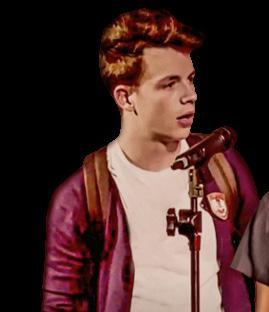
One affected student who has felt this pressure is CHS senior Andrew Posadas. With the release of “RANKED” in his freshman year, Posadas found solace in the play, knowing that many students faced concerns analogous to his own. Relocating from the educational system in the Midwest to the Bay Area – a place where academics held more popularity than clubs and other activities – served as a major cultural shift, making it difficult for Posadas to adjust to a new lifestyle.
“And then to have something like “RANKED” come out. I already knew a lot of seniors who were slaving over their work every single day. Day in and day out, when I just wondered if I was actually even going to graduate,” Posadas said. “I would always wonder, and I would always think: why can’t I be like this? Why can’t I be like these other people? And it gave me this mindset of wanting to fit in because I felt so left out from ev eryone else. It took me until junior year to realize I don’t have to give a [expletive] about any of that.”
The play was well-received after its premiere, and as word of “RANKED” spread nationwide, Arcadia Con rad, Cupertino’s The atre Program Director, reached out about stag ing the musical. Upon receiving approval, the
Many CHS students believed this was where the school’s involvement with the play would end. But in the fall of 2019, HBO camera crews set foot on the Cupertino campus and began shooting scenes for the documentary. HBO was initially only collaborating with Granite Bay – the first school to host the musical – and reached out to Conrad in pursuit of more schools to spotlight. Upon meeting with Ricki Stern and Annie Sundberg, producers and directors of the documentary, Conrad was provided

broad idea of the film. Originally, “My So-Called High School Rank” was inspired by the college admissions scandal of 2019, and the documentary would showcase a general following of students at CHS. But in the fall of 2019, HBO camera crews set foot on the Cupertino campus and began shooting scenes for the documentary. More specifically, these camera crews followed CAT students as they went about their daily lives, including then-junior Senih Okuyucu.
“They were really just everywhere. They’d follow [us] throughout the halls, and I was like, ‘Oh, my God, Senih, you’re famous,’”
didn’t like the attention, and even at rehearsals, they’re like, ‘Well, it’s hard to perform when there’s a camera crew following you around.’”

With costumes and sets ready, excitement grew for the showcase of “RANKED.” Conrad expressed that the production, coupled with the film crew capturing intricate aspects of the academic culture at CHS, was an exhilarating experience. Unfortunately, the spread of COVID-19 induced a nationwide shelter-in-place merely days before opening week, halting all production of the play. All of a sudden, the entire focus of HBO’s documentary was forced to shift as the drama department was no longer able to meet in person.
“The day that they shut the school down, and the day that they shut the musical down, was easily one of the worst days of my life,” Conrad said. “But they captured that with humility, grace and compassion.”
Instead of scrapping the footage or waiting for the eventual reopening of CHS, Stern and Sundberg continued to procure footage capturing students’ lives in isolation, requesting
CAT students to send video diaries of life during the lockdown and college-related content. HBO’s film crew remained on and off at CHS, returning to cover the drivethrough graduation hosted later in the year. They continued to follow a few students on Zoom on separate arrangements and agreements once the school could no longer accommodate them and came back in the fall for final follow-ups.
Supplied with coverage of these newfound circumstances, the documentary strayed from its initial emphasis on the academic world. It broadened to incorporate the narratives of high school students living through the pandemic and the social movements born in 2020, namely the resurgence of the Black Lives Matter movement.
The play’s theme remains relevant to the attitudes around academics at CHS. The way that “RANKED” so closely mirrors life at Cupertino attracted Stern–she believed the play simulated Cupertino’s environment to a tee, explained Okuyucu. “I feel like Cupertino is so much more above and not beyond. [...] It’s cutthroat,” Okuyucu said

“
I FEEL LIKE CUPERTINO IS SO MUCH MORE ABOVE AND NOT BEYOND. [...] IT’S CUTTHROAT. ”
SENIH OKUYUCU
competitive school environment and the performance of the play “RANKED”
The details and impact of the millions of dollars Congresswoman Zoe Lofgren dedicated to improving the community
Congresswoman Zoe Lofgren, D-San Jose, delivered $1.2 million to the YMCA of Silicon Valley to fund low and no-cost after-school programs that the nonprofit says are a key to keeping kids off the streets and off drugs.

Lofgren, whose 19th Congressional District includes much of San Jose and southern Santa Clara County, delivered the check personally at an October ceremony. The project was one of 10 selected to share in more than $7.5 million in congressional funding earmarked for Lofgren’s district this year, a press release from the lawmaker’s office said.
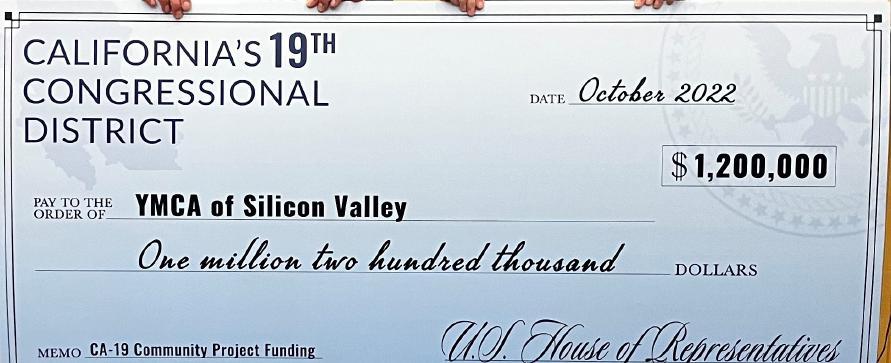
The YMCA funding will go towards anti-substance abuse, youth readiness and anti-tobacco curriculum resources often limited in schools and educational programs. Schools generally teach about the dangerous effects of alcohol but not as much about other commonly abused substances. According to the American Addiction Centers, which surveyed 500 respondents on anti-substance abuse education, 51 percent did not learn about the effects of meth and 55 percent did not learn about ecstasy’s dangers. Nearly half
were not taught about heroin’s or opioids’ effects either.
“Statistically, research shows that the highest risk factors around juvenile crime arrests and delinquent behavior happen between the hours of 3 to 6 pm,” Lizeth Gonzalez, executive director of YMCA of Silicon Valley’s Youth Development, said. Not only are we capturing the students and providing a safe place to be during those hours, but we’re also utilizing that time to educate them so that they can make positive decisions as they move forward.”
The new programs are intended to emphasize the development of healthy habits through an age-specific curriculum—one for younger kids and another for those in middle and high school. “The younger kids might not necessarily be thinking of drug abuse or smoking, but it definitely is the build-up to the smaller risk behaviors that have happened, maybe in playgrounds or at school with bullying or not doing the right thing […] to teaching them those pieces of grit and resilience, so that when they come to harder situations as they get older, when there is maybe exposure to tobacco, to E-cigarettes to drugs, etc., they have built up language as well as actions and how to say no, and how to prevent themselves from being in those situations. This is their toolbox to set boundaries,” Gonzalez said.
Staff members teach students how tobacco and marijuana use impacts brain development in children. Said Doreen Hassan, Executive Director of the YMCA of Silicon Valley, “Our hope is that we’ll see a shift in perception and understanding and empower young people with the skills around resiliency to make good choices
for their future.” YMCA has partnered with Stanford to create lesson plans involving scenarios and open discussion among the students to talk about their experiences and skill development. The content primarily focuses on self-awareness and management, responsible decision-making, relationship skills and social-emotional learning.
YMCA also connected with the Santa Clara County tobacco prevention use program, which provides them with shared resources. They previously hosted a competition where students submitted anti-substance abuse posters. Additionally, they hold educational workshops showing one’s brain on certain drugs as compared to a healthy brain for middle and high schoolers.
Lofgren’s contribution to YMCA has also impacted parents who often struggle to find supervised after-school care. YMCA has used this funding to increase capacity and resources, including furthering critical thinking and collaboration skills, leadership development and daily homework help. After-school care in California is often insufficient for the number of children in need. Parents are put on long waiting lists - with around 2.4 million youth currently waiting - and often can not receive supervised care for their children. With Lofgren’s funding, YMCA can expand its after-school care capacity by 760.
Bay Area Community Health




Bay Area health initiatives also benefit from Zoe Lofgren’s funding, including a sum of $1 million to Bay Area Community Health for improving their electronic health information records. Clinicians can now take advan-
tage of the increased data at their disposal and better aid their patients.




Lofgren and the Bay Area community celebrated this funding at an event Oct. 11, as she presented checks passed by Congress. Three other organizations accepted grants as well: San Jose Police Department ($1 million), San Jose State University ($500,000) and SOMOS Mayfair ($500,000), a total of $3 million.

SJPD is using the funds to run the Mobile Crisis Assessment Team with the County of Santa Clara Behavioral Health Services, which will allow behavioral health professionals to answer emergency mental health calls.
SJSU’s Healthy Development Community Clinic can help children in underserved communities by expanding their education and mental health services.
SOMOS Mayfair’s new community center allows for supportive housing and economic development. It will be at the Quetzal Garden Apartments and provide resources for families who need them. In particular, Mayfair’s program has the Life Moves Parking Program, with parking spaces for motorhomes, and Home First Outreach Services, which provides shelter and housing.
Tino students also recognize the need for housing solutions in our community. Said Aruja Gupta, co-president of Tino Cancer Society and vice president of Tino Global Health Club, “I guess we assume that everybody around this area’s rich, but if you see the homelessness, that’s increasing [...] and they aren’t able to escape this area.”
Lofgren financed a total of $7,510,000 for community projects in the nineteenth Congressional district, which the U.S. House of Representatives signed into law from a Community Project Funding request in March 2022



The College and Career Center was named in honor of former CHS principal Barbara Nunes
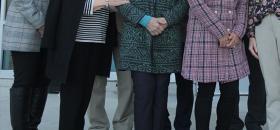

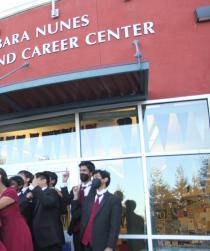
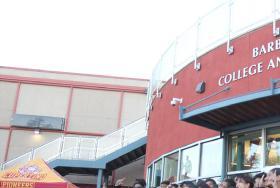

Students frequenting the quad may notice a new name atop the College and Career Center. The facility is now named the Barbara Nunes College and Career Center, in honor of the principal who led Cupertino High for 13 years.



Barbara Nunes came to CHS as a business teacher in 1964, serving as department chair and Coordinator of Curriculum before becoming principal in 1987. Under Nunes, Cupertino High was twice named a California Distinguished School (1990, 1994) and won the National Blue Ribbon School award in 1996. After retiring from her principal duties in 2000, Nunes was later elected as a Fremont Union High School District Board of Trustees member in 2002.
She was honored at a dedication ceremony Nov. 15 led by Nunes’ goddaughter Susan Rocha, Homestead High School’s administrator along with CHS teacher Wes Morse among others.

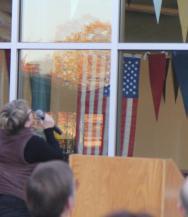








Nunes’ achievements include raising over $750 million in bond campaigns to improve office buildings, the cafeteria, artificial turf fields and renovations of areas on CHS’ campus. Her name on the College and Career Center highlights her creation of the first career center in Santa Clara Valley, which still helps students today

The faces on paper bills are undoubtedly familiar. From George Washington on the $1 bill to Ulysses S. Grant on the $50 bill, the figures on American currency are recognizable as influential presidents, politicians and statesmen throughout history. However, with plans to put Harriet Tubman on the $20 bill delayed, replacing the current faces on our paper notes needs to be prioritized. In the movement to address the nation’s past wrongdoings, politicians should replace controversial faces on America’s paper notes with individuals who have accomplished real, positive change.
The Department of Treasury printed Washington’s face on the $1 bill for the first time in 1869, where it has remained for the past 150 years. Since then, countless presidents have graced paper currency. Since 1914, Abraham Lincoln — the U.S. president credited for abolishing slavery — has graced the $5 bill. In the
same year, American polymath Benjamin Franklin appeared on the $100.
In 1886, George Washington’s wife, Martha Washington, appeared on the $1 silver certificate. Between 1865 and 1869, Pocahontas appeared on the back of the $20 bill. However, there are currently no women on paper currency. Although women’s suffrage leader Susan B. Anthony and Shoshone explorer Sacagawea adorn dollar coins, consumers primarily use them as collector items and are rarely in circulation.
In 2016, in an open letter to the American people, then-Treasury Secretary Jack Lew announced that Harriet Tubman, the infamous abolitionist and humanitarian who freed dozens of slaves as a conductor of the Underground Railroad, would replace Andrew Jackson on the $20 bill. The redesign, scheduled for 2020, was intended to coincide with the centennial anniversary of the 19th Amendment, which granted women’s suffrage.
For many, this announcement repre - sented a significant step forward in American so -
ciety. Andrew Jackson, the face of the $20 bill since 1928, adopted genocidal and pro-slavery policies, and was the architect of the Trail of Tears, which killed more than 3,000 Native Americans by forcibly removing them from their lands and marching them more than 2,000 miles to newly designated reservations. Jackson also incurred the Panic of 1937 and adopted the spoils system, leading to a year-long financial crisis and lasting systemic political corruption. Descendants of Tubman and women’s empowerment organizations publicly expressed their support of the moment.
In 2020, Donald Trump’s victory in the presidential elections brought the movement to an abrupt halt.
“Well, Andrew Jackson had a great history, and I think it’s very rough when you take somebody off the bill,” Trump said in an interview with NBC News. “I think Harriet Tubman is fantastic, but I would love to leave Andrew Jackson or see if we can maybe come up with another denomination.”
An announcement by
then-Treasury Secretary Steven Mnuchin further disappointed supporters of the movement. Mnuchin, a member of the Cabinet of Donald Trump, said that the Treasury Department halted plans to place Tubman on the $20 bill until at least 2030.
Contrary to Trump’s statement that replacing the faces on currency is “rough,” the treasury secretary has unilateral power to remove any individual from the bills at any time. Congress also has the power to change the faces. Congress has already implemented a schedule for an intended redesign to avoid counterfeiting.
The Advanced Counterfeit Deterrence Committee has been developing future issuance dates since 2011. The $5, $10, $20, $50, and $100 bills are scheduled for redesigns between 2026 and 2034. Given the intended redesign, replacing the faces will be a welcome change. Furthermore, the scheduled dates provide a practical timetable for replacing the faces on all paper bills, not just the $20.
The United States should also consider existing foreign systems when consider -
ing currency redesigns. In Japan, banknotes change roughly every two decades. The recent modifications, set to enter circulation in 2024, feature industrialist Eiichi Shibusawa, pivotal in establishing the first bank in Japan, Umeko Tsuda, a pioneer in Japanese women’s education, and bacteriologist Shibasaburo Kitasato, renowned for his achievements in medicine and tetanus treatment. Japan’s system of redesigning paper money allows influential modern figures to be featured rather than maintaining outdated faces.
Instead of allowing problematic figures such as Andrew Jackson to remain in circulation for prolonged periods, the U.S. should adopt a similar system replacing faces in addition to modernizing with counterfeit-prevention measures.
Following the example of other countries, paper notes should feature individuals beyond politicians or statesmen. Painters, scientists, inventors, musicians, activists and intellectuals who have made strides in their fields should also be up for nomination, much like composer Clara Schumann or inventor Nikola Tesla who have graced
the bills in Germany and Serbia, respectively. In the United Kingdom, writer Jane Austen embellishes the 10-pound note. Similarly, American society has seen dozens of literary greats who could have a place in currency, including Emily Dickinson, John Steinbeck and Edgar Allan Poe.
“What is honored in a society will be produced there,” said classical period Greek philosopher Plato in his famed Socratic dialogue “Republic.” Placing certain figures on our currency invokes the cultural message that we value their achievements and want them to represent us as a country.
Given the current lineup of individuals on America’s paper bills and their controversial histories, it is difficult to convey a progressive, constructive message. In alliance with the movement to mend America’s problematic history, the U.S. should replace the current faces on paper money with images of people who truly represent the spirit of the United States of America
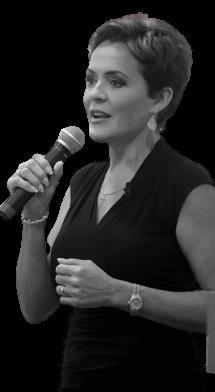




The current way of running political campaigns needs to change. And fast.
The recent midterm elections strongly suggests American voters are fed up with the polarizing, misinformation tactics that are unabashedly designed to dupe millions of gullible Americans willing to sacrifice truth and integrity in favor of radical change. Most of the candidates who employed such radical tactics lost.
But some, including retired NFL running back Herschel Walker in Georgia, nearly prevailed. Walker, a Republican Senate candidate from Georgia, openly lied about his employment background among other things. During his campaign, Walker falsely claimed involvement in law enforcement. He falsely claimed to have worked with the FBI. He even flashed an honorary police badge at a debate to bolster his claims. When asked to put down the badge, he stated, “This isn’t a prop, it’s real!”
Walker’s commitment to deception as a tool underscore his incompetence. Despite it all, he advanced to a runoff election. The near success of his campaign, as well as several other politicians, raises a question hotly debated at the first convention of the Continental Congress. Is the American public smart enough to choose its leaders?”
Political advertisements have become increasingly extremist over the last decade. Candidates dissect and routinely exaggerate or misrepresent their opponents qualifications and political history.
According to National Public Radio, Arizona gubernatorial candidate Kari Lake–a republican–ran a campaign advertisement that said,“If you’re watching this ad right now, it means you’re in the middle of watching a fake news program. You know how to know it’s fake? Because they won’t even cover the biggest story out there, the rigged election of 2020.”
An ad from Priorities USA, a
left-leaning ad agency, told viewers a story, warning voters that former President Donald Trump is planning a hostile takeover of Congress, much like the violent siege unleashed on Capital Hill on January 6 by a roving, riotous band of his supporters.
“Last time was just a test run. Donald Trump is putting people in place now to dictate the outcome of the next presidential election,” the ad said. What’s more frightening is that the creators and proponents of this targeted media are legally permitted to lie, according to Tim Wheeler, the chairman of the Federal Communications Commission under former President Barack Obama.
Moreover, social media, where many voters will be exposed to all kinds of political information, is unmoderated and tailored to a user’s prefer-
Donald Trump’s failed reelection campaign and the attempted coup attempt that ensued. The candidates’ fervent support of Trump’s ideals and adoption of his antics, will lead Trump fans to seeing their ideals live on through the candidates.
Both Lake and Walker touted conspiracy theories ranging from election fraud during the 2020 election to Chinese and Mexican workers disguising fentanyl as candy. Walker vowed to continue building Trump’s contentious border wall. Lake, after losing her Senate bid by less than 1 percent of the vote, questioned the election’s validity and sued for election fraud. Walker has aggressively supported banning abortions, yet he has paid for multiple himself, according to NPR.
ences, so voters will only read what they engage with the most. Whether it is tweets from an official newspaper or far-right conspiracy theories reposted on Facebook, it is all curated by various social media algorithms.
Under mainstream media, many Republicans’ conspiracy theories and scandals have been put under scrutiny, leading to conservative politicians encouraging their voters to stop reading mainstream news. However, a voter who does not browse mainstream media will not come in contact with this information. Combined with the misinformation in political ads, voters’ minds are skewed by this vicious twopart combination.
Republican candidates such as Lake and Walker used strategies to garner support from die-hard fans, stirred to action by former president
All of these actions combined lead to a legion of misguided voters and politicians. The seeds of lies are already sown, in what candidates say on television, in what ads say on YouTube and in what Trump says on social media. Without mitigation, they will take hold and massively skew voters’ mindsets in an irreversible way. As a countermeasure, laws should be enacted to ban certain types of misinformation. Even the press is banned from producing slander, sedition and incitement, so it’s logical to ban that from political messages as well.
If polarizing media is the issue, it is time to advocate for neutralizing this media to simple facts – or is it?
A truthful, powerful press may be the only thing stopping politicians from brainwashing the country with lies. That’s why popular media should not only remain uncensored, but actions should be done to expose more people to more sides of a conflict. Americans need to understand each other to keep going in the right direction
Political campaigns embody the heart, soul and compassion of politicians, but they should also be truthful. Placing tighter control on the spread of misinformation in political messages and ads will directly decrease misinformation and help make voters see candidates more clearly, thus achieving better elections
“
” IF POLARIZING MEDIA IS THE ISSUE, IT IS TIME TO ADVOCATE FOR NEUTRALIZING THIS MEDIA TO SIMPLE FACTS.DESIGNED BY SOHA ROY
Christmas season means more than giving gifts and spending time with family for ballerinas around the world. Every winter, dancers busily prepare to perform in the classic ballet, “The Nutcracker.” The ballet follows Clara, a young girl who received a nutcracker as a gift during a Christmas party. After the party, she falls asleep with the nutcracker in her arms. In her dream, it comes to life to fight the ballet’s antagonists, the Mouse King and his army. The nutcracker defeats the Mouse King and transforms into a prince. He leads Clara on a journey through the Magical Forest and different fantastical lands in the Kingdom of Sweets, where the Sugar Plum Fairy holds a celebration in honor of them. The story ends as Clara awakens from her slumber, safe at home in her living room with her nutcracker toy. Ballerinas audition and are recruited for each part of the ballet. Every age group and experience level has its set of roles.


For junior Kaylee Ng, “The Nutcracker” holds a special place in her heart. ‘“[The Nutcracker]’ has definitely created a lot of special memories for me,” Ng said. “When I think of Christmas, the one thing my brain immediately goes to is ‘The Nutcracker.’”
Starting as a Party Girl in the party scene of the first act when she was younger, Ng now plays the role of Flowers and is an understudy for the role of Snow. When asked about her favorite part of “The Nutcracker,” Ng commented on the unforgettable soundtrack and atmosphere of the ballet.
“My favorite part is just listening to the soundtrack because the music is really nostalgic,” she said. “When I dance in ‘The Nutcracker,’ I’m able to portray the emotions because I know the story”
The Nutcracker” has been a significant part of sophomore Emily Wright’s life since she started dancing 12 years ago.

Performing in “The Nutcracker” for her tenth year, Wright prepares with weekly practices and on-stage rehearsals.
“Practices [are currently] once a week, and they are multiple hours long,” Wright said. “Rehearsals are super long, like three to four hours. It’s a full run through of the dance. [We have] a full dress rehearsal a week before when we run through the whole ballet from start to finish, maybe twice.”
When asked about performances, Wright commented on the feeling of performing on stage. “You may be super scared and super nervous before you go on but once you start dancing, all your nerves just melt away”
Starting her career in “The Nutcracker” as a Party Girl, junior Catherine Xu leaped closer to her dream role of the Sugar Plum Fairy.

“When you get older, there’s more stage time, the routines get more difficult and you start adding pointe shoes,” she said.
Xu’s first performance of “The Nutcracker” was one of her most memorable shows.
“Being on stage for the first time with pretty costumes, after you’ve worked hard for many months, you finally get to show off what you worked on,” Xu said.
Xu is now focused on competitions, learning as much as she can. Xu said she expects to continue dancing long into her future.
“Although other performances are really special, the Nutcracker stays the same every single year. [‘The Nutcracker’] is just nostalgic – it’s been with you for such a long time”
For her twelfth “The Nutcracker” performance, junior Riko Hatanaka will perform as the Sugar Plum Fairy, a principal role in the ballet. Dancing in “The Nutcracker” since she was 4 years old, Hatanaka has performed a variety of roles starting off as a Bon Bon, a child who performs a short dance with Mother Ginger. At age 9, Hatanaka danced as the coveted role of Clara, the main character of the ballet.
Said Hatanaka, “I liked [performing as] Clara best because that was the role I wanted since I was young.”
Other roles she played include Flower Corps, Snowflake Corps, Ribbon Candy, Snow Queen and Spanish Chocolate. When asked about her most memorable moments from performing “The Nutcracker,” Hatanaka commented on the relationships she built with other dancers.
“My ballet friends are like my second family. I create memories with my friends [backstage] even though we’re only performing for three days. Those three days are the most memorable”
PHOTO BY RISHITA SHAH HAILEY RYU writer SOHA ROY features editor
DRAAAAAKEEEEE!?! Drake has come a long way from being Aubrey Graham in the wheelchair, and his music reflects it. Drake has spent close to a couple decades in the spotlight — after getting his start as the character, Jimmy Brooks on Degrassi, but is most famous for his career as an artist. After consistently topping billboards and with more number- one hits than he can count, Drake has solidified himself as one of the biggest pop stars of the 2010s. At this stage in his career, he is more of a celebrity persona than just an artist, but undoubtedly one of the funniest personalities in the mainstream.

Drake’s debut mixtape, released to the public in 2006 — long before he would get the cosign from Lil Wayne — didn’t draw much attention. Still, it was Drake’s way of making it clear that acting was not what he saw for himself in the long term, going so far as to force his way out of his Degrassi contract after his character was put into a wheelchair. When producers confronted Drake about the situation, he completely backed down and said there was no problem, setting the scene early for the type of person Drake would become.
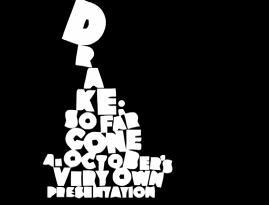
Five years later, Drake dropped what many consider his magnum opus in the form of the 19-song deluxe album, “Take Care.” “Take Care” features several artists of great renown, including Nicki Minaj, Kendrick Lamar and Rihanna. It incorporates minimalist R&B influences, with a larger focus on singing than the album’s predecessor. “Take Care” debuted at number one on the Billboard 200 and sold 631,000 copies in its first week. The album went on to win a Grammy Award for best rap album in 2013.






Drizzy out of nowhere? In 2015, Drake dropped this surprise project and still debuted at the top of Billboard Top 200. Despite giving his fans no heads up, the album shattered the Spotify record for most streams in three days with 17.3 million. It was about time Drake changed his sound, and he delivered in a big way with “Views”. Utilizing West Indian and West African beats, several of the songs featured a sound that hadn’t been present in Drake projects for several years.



Drake went back to back with hits on his fifth studio album, “Scorpion”, a 25-song double album, with its first disc being primarily hip-hop and its second containing elements of pop and R&B. The album was Drake’s producing debut. It has three number one hits: “God’s Plan,” “Nice For What” and “In My Feelings.” “Scorpion” faced incredible success on streaming platforms upon release, breaking both Spotify and Apple Music’s oneday streaming records at the time. Through the album, Drake announced that he was a father and dedicated a song to his son titled “March 14.” It would make sense that as a father and 34 yearold at the time of Certified Lover Boy’s release, that Drake would be maturing as a person. But no. In his most ridiculous look to date, the now iconic heart in his hair became a part of his persona that he adopted during this album’s rollout




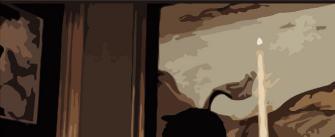

Grief is a common theme used in various Marvel Cinematic Universe movies and TV shows. “Black Panther: Wakanda Forever” has an intense and profound representation of grief, focusing on the lives of female characters Shuri, Queen Ramonda and Nakia after T-Challa’s death. The different ways each character processed grief influenced their decisions, personalities and lives. Through its message, the film honored the late actor Chadwick Boseman’s legacy as the Black Panther.
Throughout the sequel, grief significantly shaped T’Challa’s sister, Shuri. Her grief was first seen during the funeral of the late King T’Challa, as she broke down from the guilt of not being able to save her brother. Shuri once again experienced significant trauma a year later when the underwater Talokanil civilization revealed itself and attacked Wakanda, killing her mother, Queen Ramonda. Instead of being dictated by vengeful motivations, however, Shuri chose to act nobly and accept her role as the guardian of Wakanda. Only after acknowledging her grief — by performing the Wakandan ritual of burning funeral garbs — did she move forward and grow from her
grief into a mature heroine. While she could never fully recover from the loss of her family, Shuri’s values were permanently altered by her grief. She became a leader who was wiser and more understanding as a result of her suffering.
Unlike her daughter, Queen Ramonda’s role as leader of Wakanda did not allow her time to grieve. Ramonda found solace in the Wakandan belief that her son was with their ancestors in the afterlife and his spirit was watching over her and Wakanda. When faced with attacks from the outside world while recovering from her son’s death, she led herself and her nation without timidity or weakness, showing her strength. Queen Ramonda’s early acceptance of her loss allowed her to rule reasonably and fight for the protection of her country. Despite all her pain, Ramonda’s role as an honorable mother and queen showed that grief and suffering do not define a person. Rather, grief can strengthen one’s character.
Nakia, T’Challa’s significant other, processed her grief by reprioritizing her goals and lead -
ing a new life in Haiti, where she wanted to help the underprivileged. Despite her character’s desire to always protect those she cared for, Nakia’s grief led her to isolate herself from Wakanda. With her independence, she built a school in Haiti that utilized Wakandan teaching practices for sustainability and improving the community. She continued T’Challa’s goal of aiding those in need through her work and carried on his legacy as a leader dedicated to change. Nakia’s reaction to her grief represented how accepting grief can lead to positive change in one’s life.
The characters’ grief of losing T’Challa paralleled the grief the actors felt for their co-star Chadwick Boseman. The sequel and its plotline were a way for the cast members to honor Boseman and his legacy.
“Going onto this new project without him is incredibly difficult,” said Letitia Wright, who played Shuri, in an interview with Newsone. “The love that Shuri had for her brother [...] was the love we had for each other offset.”
Lupita Nyong’o, Nakia’s ac -
tress, used her character as an outlet for her grief.
“Even just talking about “Black Panther” in the midst of still grieving Chadwick, it was really complicated emotionally to do. Ryan wrote something that so honored the truth of what every one of us was feeling, those of us who knew Chadwick,” Nyong’o said in an interview with The Hollywood Reporter. “He created something that could honor that and carry the story forward. By the end, I was weeping.”
Through various character depictions of grief, “Black Panther: Wakanda Forever” highlighted the importance of accepting and honoring one’s grief. The movie’s message was inspirational to both the actors and the audience by providing a space for them to express their sentiments









Since 2008, the Fremont Union High School District has worked to implement stricter sustainability projects and energy and resource conservation policies throughout the six schools.

FUHSD has built modernized energy systems, including solar paneling in new buildings and parking lots, and updated HVAC systems via a $1.8 million grant through the California Schools Healthy Air, Plumbing and Efficiency Program.
Said FUHSD Director of Maintenance and Bond, Roger Silviera, “The [Board of Trustees] has adopted a resolution with a focus on sustainability long term. More recently, in the past 10 years, they’ve installed quite a bit of solar throughout the district. It’s about 3.5 megawatts of solar production. Each new building they build comes with new solar attached to it to help offset some of the carbon emissions from that building.”
FUHSD executed other building energy conservation measures, including Building Management Systems and LED lighting installations through Proposition 39.
By conserving energy use for over 10 years through renewable energy and efficient facilities, FUHSD has aimed to lower its climate impact. According to FUHSD’s U.S. Department of Education Green Ribbon Schools 2022-23 application, the district estimated a 23 percent reduction in energy usage from 2015 to 2021 due to these energy conservation

measures. Focusing on sustainable energy, the district purchased 60 percent of non-solar electricity through PG&E, San Jose Clean Energy and Silicon Valley Clean Energy.
“We produce quite a bit of energy, but we still have some doors for improvement. I’m in the process of upgrading some pool boilers that will help save a lot of natural gas,” Silveira said. “We’re going to look at replacing more equipment that’s older and tired.”
Although many measures focus on energy conservation, the district has fostered material and food sustainability practices simultaneously.
“A couple of things we’re entertaining is possibly looking at a digester that converts the food waste in the kitchens to compost overnight. It can be used in the landscape or within the community,” Silviera said.
have donated approximately 4,000 meals to homeless shelters and senior homes in the last school year — almost 4,800 pounds of food.
“We want to tighten up the food waste. We want to start composting one way or another and see if we can limit the amount that goes to the landfill,” Silviera said. “We try to buy as much recycled material as we possibly can rather than new.”
Silveira said that FUHSD purchases paper with the highest concentration of recycled material. Adding that, the district also tries to recycle electronic waste, such as batteries, which generated 10 to 12 tons for FUHSD.
WE’RE PROBABLY A LOT BETTER THAN DISTRICTS AROUND THE STATE. BUT THERE’S ALWAYS ROOM FOR IMPROVEMENT
“Our kitchen staff has been looking at some reusable products that students will be able to take home and reuse,” Silviera said.“That way, we don’t have to keep providing new plastic or paper products to serve lunch.”
ROGER SILVIERAFUHSD reported in the Green Ribbon’s application that of solid waste, which includes garbage, recycling and compost, the district diverted 34 percent from landfilling and incineration due to reduction, recycling or composting. Said Silviera, “We’re probably a lot better than districts around the state. But there’s always room for improvement”
Years of local partnerships and donations preceded these prospective food waste projects. By working alongside Peninsula Food Runners, the five FUHSD school cafeterias

From the classroom to the cafeteria, waste is an unavoidable part of life at Cupertino High School. But through capable systems and strategies, Tino is working toward better sustainability.
Food Runners, an organization in San Mateo and Santa Clara counties, which picks up surplus foods from businesses and cafeterias and redirects it to charities and families in need. Said Castro, “It’s very rare that we throw anything out.”
Waste reduction in the kitchen is relatively simple to achieve. Cafe officials said reducing waste by students is much more challenging, “The amount of trash and food that I see on the ground is really disappointing,” student Grace Kwak said. “It is not hard to throw it away properly in one of the bins.”
Josh Kiernan, Tino’s facilities manager, values conserving energy. Said Kiernan in an email, “I try to make sure we don’t use more than we need daily.” He explained that the school conserves energy through controlled schedules for weekdays, weekends and events. He manually adjusts it when needed.
He also ensures that administrators and custodial staff do not use energy during class hours. Tino uses solar panels for renewable energy on the student and staff parking lots and the 6000 building. They power classrooms and the exterior lights in the morning and night. “We are not able to run the entire school off of the panels we have, but it does help [absorb] some of the load,” Kiernan said.
Kiernan recommends unplugging device chargers and equipment when not in use to save energy. Said Kiernan, “Every little bit helps.”
Lizandra Castro, a food service employee at Tino, explained that the cafeteria serves roughly 800 orders each day. The cafeteria’s computers count students and use that to predict the next week’s orders.
There is a surplus of around 100 leftovers after each brunch and lunch, which they pack into boxes to donate. It goes to Peninsula
According to Feeding America, more than 40 percent of the food supplied in the U.S. ends up in the trash. Offer versus serve is part of the National School Lunch Program that lets students refuse some of the food served (USDA). It is required in high schools but optional in middle and elementary schools, though food service staff encourage taking fruit and vegetables.
Students play a crucial role in waste reduction. School officials say students should only take what they will eat. Such awareness pays double dividends in waste management on campus. It reduces the amount of trash that hits landfills, and that also means more food will be donated to local agencies.
Tino staff and students use paper frequently. WTino staff and students use paper incessantly. frequently. Whether for homework, tests, labs or even flyers — too much paper ends up in landfills due to improper disposal. Spurred by the pandemic, the Fremont Union High School District is continuing the transition from pen and paper to digital documents. Assistant Principal Anna Delgadillo said that nearly all Tino households have an active email address–which hastens the digital trans.
“We’re doing a lot of our forms now via Informed
LIZANDRA CASTRO ”
“ IT’S VERY RARE THAT WE THROW ANYTHING OUT.
ANDREW GOLDENKRANZ” “ ZERO DOESN’T HAVE TO BE THE GOAL. BUT BETTER SHOULD BE THE GOAL.
K12. So everything is done electronically. So that’s cutting back,” she said.
Many teachers are minimizing waste by using paper only when necessary and reusing copies for multiple class periods. Tino teacher Andrew Goldenkranz said, “To use less paper every day, I’ve started posting my papers and assignments on Schoology. One hundred seventy copies were reduced down to forty copies.”
Still, teachers are generating more paper than in pre-COVID times. Regulating paper use by the department may help reduce wasted paper as well. “When you confront people with evidence of what they’re doing, then that tends to modify behavior,” Goldenkranz said.
Another form of waste on campus is through rally posters. Though these creative decorations bring enthusiasm and spirit, they require a lot of time and resources. Explained an Associated Student Body member through email, student council members making posters are conscious of the dimensions of each poster and take what they need, which minimizes waste.
However, since posters are specific to the rally’s theme, new ones have to be made each rally while the old ones get thrown away. Said the ASB member, “It’s hard to watch our hard work get thrown out right after.” ASB is currently exploring solutions to reduce poster waste.
Through conscious measures and sustainable practices, Tino is moving forward and producing less waste. Said Goldenkranz, “Zero doesn’t have to be the goal. But better should be the goal”
allows students to decline some foods offered in a reimbursable lunch or breakfast USDA.GOV
honors schools and districts for excellence in resource efficiency and education centering sustainability, health, wellness, and the environment
United States Department of Education
works to alleviate hunger and minimize food waste in the San Mateo and Santa Clara Counties.
23% reduction in FUHSD energy usage
4,800 pounds of food donated by FUHSD schoools
60% non-solar energy usage
Tennis ace Allison Hsieh eats, sleeps and breathes tennis as a Cupertino High School athlete.


As a sophomore, Hsieh is ranked twenty-second in California in her age category, holding a Universal Tennis Rating of 7.7. Playing in United States Tennis Association tournaments, Hsieh is a fourstar recruit. Alongside consistent practice and USTA tournaments, Hsieh plays a vital role in the Cupertino girls tennis team. She plays singles during the school season and went undefeated in league matches.
Said Hsieh looking back at her childhood, "I hated tennis at that moment, but I always found myself going back to it." Hsieh started playing at 7-years-old — tennis has surrounded Hsieh throughout her life.
"I started just for fun, and I got really into it and started practicing often," said Hsieh when asked about the beginning of her tennis journey. Practicing daily with her dad and brother, Hsieh keeps a consistent training and tournament preparation routine. Hsieh practices weekly for two to three hours and competes at tournaments on weekends.
Tennis has taught Hsieh a lot about life on and off the court, including how to be responsible and respectful to others by demonstrating sportsmanship during matches. Hsieh knows how much work it takes to be successful — accepting and growing from the failures along the way.
Tennis has taught her how to balance athletics and school.
“I definitely learned to manage my time better by just finishing as much work as possible before doing anything else,” she said. Tennis has also helped Hsieh form lifelong friendships.
“I'm grateful for my friends [who] helped me motivate myself and the entire school team for being really supportive throughout the season.”
She enjoys hanging out with her
teammates after long practices to bond with them throughout the season. Hsieh plans to compete in the future, including college tennis. Afterwards, she hopes to play occasionally for fun.
After the successful season of the Cupertino girls tennis team, Hsieh could not be prouder of her teammates and the effort they put into the practices and matches leading up to the California Interscholastic Federation Regional championship. She said her favorite memory with the entirety trip, both fun. Said Hsieh, "I think we all have a good bond with each other which really helped in being supportive of one another." Arohi Behara, her close friend and teammate, said Hsieh is inspiring to watch.
"Allison has made immense strides as a player, “ Behara said, referring to how Hsieh's mental toughness and skills improved throughout the season, becoming one of her greatest assets
The Cupertino High School girls
tennis team capped its undefeated season last month, winning the CIF Northern California Regional Championship for the first time in school history.
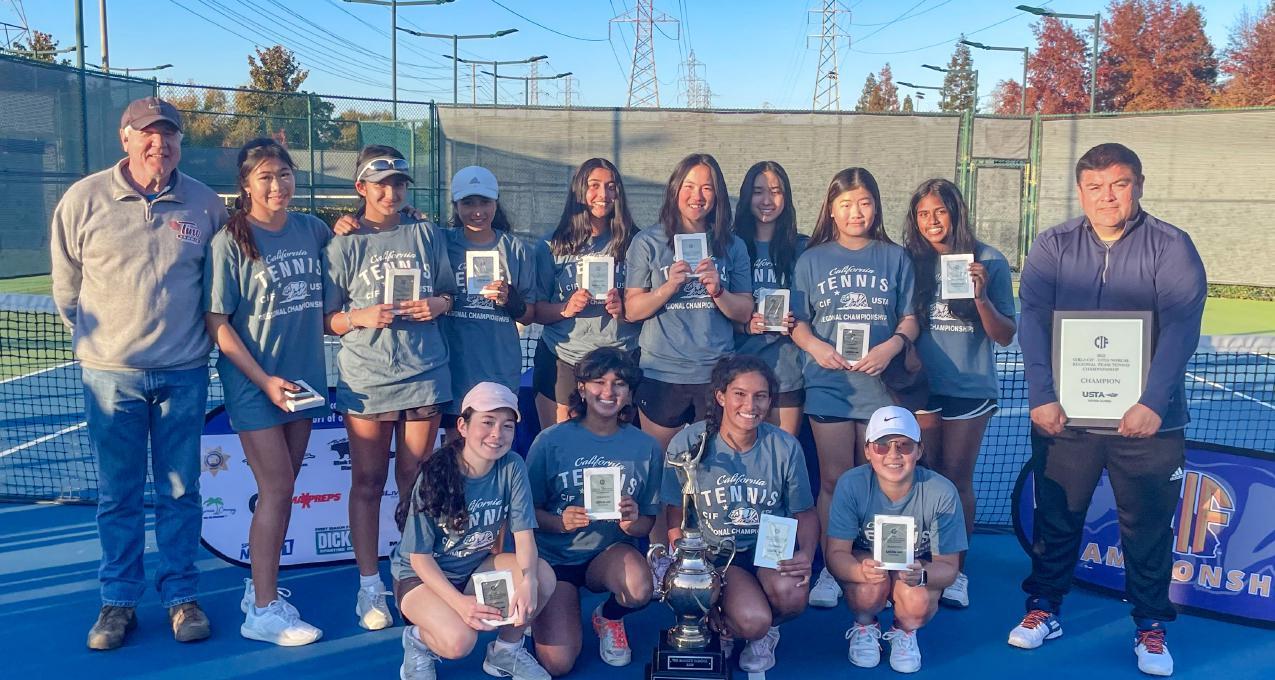
Meanwhile, on Nov. 16, Cupertino’s Gayathri Krishnan won her second consecutive CCS singles championship at the Bay Club Courtside in Los Gatos. Her win marked the third time in four years a Cupertino athlete won the CCS singles title in girls tennis.
The CIF Regional Championship took place at the Broadstone Sports Club in Folsom — it matched the top two teams from each of the five Northern California sections: the North Coast, Northern, Oakland, San Francisco and Central Coast sections — Cupertino plays in the CCS.
CIF split the championship into three rounds and the Cupertino Pioneers won 3-0. The team beat Chico 7-0 in the opening round, won 5-2 against Amador Valley in round two
and avenged its CCS loss to Monta Vista by beating the Matadors 5-2 in the final match.
The team endured three consecutive weeks of tournaments in teams, doubles and singles matches. Varsity coach Manuel Zarate selected 10 out of 16 players for the champion-
said that spending such substantial time together ultimately strengthened their bond to where they are now like a family.
“My love for the team started when I was a freshman,” Lee said. “I remember looking up to the captains and the senior members of the team who would always help out each other.”
Lee said that the team’s relationship focused on keeping tennis enjoyable for the players.
“We always look out for one another if something’s wrong or you’re not feeling well,” Lee said. “We put the person’s mental well-being before trying to push them to compete or getting mad at them for losing.”
ship games.
“We focused on making the 10 people as good as possible,” senior team captain Nadia Lee said. “I remember that was a very intense time because we’re just trying to get as much work done in such a short time period to get ready.”
The team practiced two hours a day, five to six days a week. Lee
That approach paid off, reaching a perfect 12-0 regular season and a Santa Clara Valley Athletic League crown. Despite the team’s 4-3 final-match loss at CCS against Monta Vista, Cupertino earned a spot in the CIF Regional Championship — leading to their monumental win
“ WE ALWAYS LOOK OUT FOR ONE ANOTHER IF SOMETHING’S WRONG OR YOU’RE NOT FEELING WELL.
NADIA LEE
An editorial on the negative reprocussions and societal stigma associated with leaving a sport
The sports world glorifies athletes’ achievements and commitments without considering their mental and physical well-being. The negative repercussions lead many athletes to ask themselves: Did I make the right decision? Will I ever make it to the top?
Bay Area students cannot get enough extracurricular activities. It is not a rare sight to see students committing to one or more sports starting at a young age while balancing an academic and social life. A survey of 18 Prospector staffers reported 17 had played a sport. Out of the 17 athletes, two committed to the sport for seven or more years, seven committed for four to six years and eight committed for three years or less.
In the competitive environment of Cupertino High School, the social sphere admires and associates athletes with their accomplishments and long-term commitment. Athletes fear quitting their sport for being viewed negatively by their peers. The Prospector staffers responded
that Cupertino views the inability to continue a sport as a loss of a “flex” on their resume or a sign of weakness in the athlete’s integrity. One staffer reported that quit-
suffering from negative mental repercussions. Staffers mentioned that leaving their sport worsened their self-perception and ability to interact with former team members — causing guilt overall. Staffers also became stressed for fear of falling behind their peers by losing an item to impress colleges.
ting could negatively impact the athlete’s team and diminish the athlete’s dedication to the sport.
“I feel like if I played basketball as a captain last
year, I should play it out just for the college applications and the chances I get captain next year. I don’t want to give up a sport that I played my entire life as well. Plus, I feel like I will lose all my motivation to be productive, or I might not be doing enough extracurriculars since my entire high school career revolves around playing my two sports,” said junior Rishita Shah.
As a result, athletes considering quitting their sport are pressured back into continuing their
One Prospector member felt a sense of loss after quitting volleyball. “Because we don’t meet each other during practice and games anymore, we don’t see other as frequently. Whereas we meet each other every day for practice, now we would only see each other across the hallway. It became hard to bond with each other and made us out of touch,” sophomore Alexander Liu said.
Quitting a
sport is not simply due to an athlete’s unwillingness to pursue their sport. There are many factors at play including the immense stress of participating in sports,
“CUPERTINO VIEWS THE INABILITY TO CONTINUE A SPORT AS A LOSS OF A ‘FLEX’ ON THEIR RESUME OR A SIGN OF WEAKNESS [...] ”
BENJAMIN LIU writer
injuries and constant exposure to toxic environments. Athletes deal with having high expectations for their sport to outperform others and may quit their sport to prioritize mental health. Many staffers reported high levels of stress and pressure while playing their sport.
Long-term injuries can discourage athletes from continuing their sport because of the tedious recovery process. If athletes ignore their injuries, the issues may worsen until it renders them unable to perform. Injuries are not the only issue related to physical condition. One dancer in the Prospector disclosed struggles with body image issues caused by their sport had eventually led them to quit.
“The teacher did not have enough concern for the dancers and pushed us too hard to the point where it was painful. The sport in general is also just linked to a lot of body image issues that made it
hard to continue in the environment even though I was very young, like elementary school age,” said an anonymous staffer.
It can be difficult to tell when it is the right time for an athlete to take a step back and quit their sport. One staffer stated that although students in Cupertino are supportive of quitting for their well-being, they would not do it themselves.
When making life-changing decisions, athletes should trust their gut instinct and rely on logical thinking. Athletes must evaluate temporary problems versus long-term issues and understand which pathway is right for
them. The athlete should thoroughly consider why they continue to play the sport. Has their reason for participating in their sport changed since they started? Are they competing for the sake of achievements instead of passion?
If an athlete thoughtfully reasons their decision to quit, do not call them a quitter. Instead, congratulate them on being a “chooser” because they made the right decision






It was March 2021 when I clicked past the purple and gold and into the royal blue. There was a letter waiting for

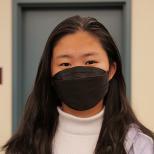
me on the website. When I opened the file, it greeted me with a “Dear Joyce ,” — there was a space after that comma that I still think is strange — “Congratulations, you are now a 2021 Scholastic Awards National Medalist!”
In the years since, every relative I see has greeted me with a peculiar smile and a curious look of amusement as they ask, “So. You want to be a writer, right?” The question is never really a question in the first place, and their delivery is always the same. Even though all they could have heard through the Korean bragging grapevine was about the awards, that question hid an assumption inside of it — an assumption that they never internally approved of.
Outwardly, they took my successful Scholastic entries as a sign I would be a writer. Still, it was obvious to me that they thought writing would be my ticket to college, the one extracurricular that would set me apart on college applications — that my one talent, which happened to be in the humanities field, would be the pathway to a career in science, engineering, mathematics or technology.
In the Bay Area, and espe-
cially at Cupertino High School, there is a huge emphasis on the future — specifically, college. Students are quickly burdened with the apparent standard of ten advanced placement courses, a near-perfect score on every standardized test and a top grade point average. We think so much about getting into a “good” college that we do not know what to do when we get there — but we humanities-oriented students understand that this will not always align with our interests.
Our community ingrains in us from a young age that humanities careers are inferior or unstable in comparison to other occupations. Especially for a school population largely composed of immigrant families, there is often no generational wealth or stored-away college funds. Parents expect their children to select the careers that will bring them the most financial stability — to choose the best future. And to them, the best future almost always means choosing a career in STEM.
Even Tino’s curriculums seem to have the same opinion. Many students view history and literature as boring courses that require an unnecessary amount of effort to think about, only to find that there is no right answer in the end. Particularly in a highly stressful, fast-paced environment, classes like these should be a much-needed focal point for students to find their identities.
Humanities-oriented stu-
dents often have to choose time-consuming, competitive extracurriculars to pursue those interests. However, while these activities can be an incredible opportunity for growth, they also risk dissipating one’s passion. To me, it seemed that in order to make the time and effort I put into writing worthwhile, it had to be something that would benefit my college applications.
Soon after these thoughts began, I hit a slump in my writing. It took me a long time to realize that I was almost weaponizing writing, turning it into something to distinguish me from the STEM students. After that, it took me a very long time to remember my passion for writing again, and even now, I am still on the way to remembering how I felt before it all happened.
The humanities are not simply a requirement to get past high school and college. The arts are more than an extracurricular activity to put on your resume. To humanities and arts-oriented students, they mean so much more — they are our world, dreams and true passions.
Perhaps your future is in STEM. But that does not mean that mine has to be
JOYCE LEE
“
STILL, IT WAS OBVIOUS TO ME THAT THEY THOUGHT WRITING WOULD BE MY TICKET TO COLLEGE [...] ”
JOYCE LEE
WEBSITE: CHSPROSPECTOR.COM
INSTAGRAM: @CHSPROSPECTOR
PODCAST: THE PROSPECTOR PODCAST
FLICKR: THECHSPROSPECTOR
[BACK COVER]